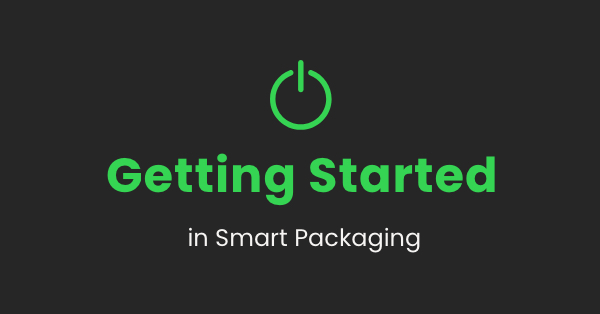
Smart Packaging Project Costs and ROI
As part of our ongoing “Getting Started with Smart Packaging” series, this post will explore potential project costs and ways to measure ROI for smart packaging and connected products projects. For other entries in the Getting Started series, visit the Blog at www.tapwow.net/blog.
Marketing programs are evaluated by their potential ROI which is often hard to measure and smart packaging projects are no exception. The challenges with such projects can be quite different as some traditional measurement metrics are not useful or easy to apply while the costs associated with the projects can get rather high because of the need to add markers to products in addition to developing a campaign. In this post we will evaluate the costs associated with smart packaging projects as well as different means to measure their potential ROI.
Cost is a common reason for why brands have not begun a smart packaging effort to date. They are used to having comprehensive creative campaigns with associated media buys, but programs that require a change to the printed package, or the addition of an NFC tag for example, are not as common. The costs associated with packaging changes or product line changes can be prohibitive and often make brands evaluate smart packaging campaigns much more harshly. A failed traditional media campaign for a particular holiday or season can be written off as a learning process while content included on a package has a longer shelf life and more implications. The simple concept that a marketing campaign could have a per package cost raises the stakes on success.
There are a variety of cost components in smart packaging but the conversation often starts with the marker that will trigger the smartphone interaction. Choices like QR codes, NFC tags, barcodes, and GS1 Digital Links have different costs, but also offer different capabilities. QR codes may seem like the cheapest alternative because they are printed on a package, but if you add the need for serialization where each package is unique, the cost per package increases quickly. NFC tags, which offer a unique combination of a frictionless experience and serialization, can cost anywhere from $0.06 to $0.75 depending on volume and technical specs. In addition to the unit cost of the tag itself, there are costs associated with applying the tag to a package which can vary widely based on how the tag is applied and in what environment(high speed line, type of package, etc.).
In addition to getting markers on products, there are costs associated with the campaign and the associated digital experience. “Smart packaging” is one component in a comprehensive marketing project that should include media spend, creative development, etc. It creates a new opportunity for interaction and represents an additional channel, but it is still part of a complete marketing plan. The digital experience is the brand’s opportunity for what we call a “Hand to Brand” connection and is the key component to the success of the effort. Brands want to create a targeted experience that will achieve the goals of the campaign, not just provide a link to a product website. The better the engagement, the more successful the campaign will be. Brands need to look at smart packaging and the associated costs as simply another component in a comprehensive marketing strategy, so instead of thinking that an $0.08 per package increase is too expensive, the thought would be that this comprehensive marketing campaign for $500,000 will yield great results.
Results are essential for any marketing campaign and measuring the success of campaigns with a smart packaging component can be challenging. Instead of simply evaluating whether a brand sold more units, these programs might need to be evaluated on the impact on consumers and brand reputation. If a marker was placed on every package in a particular retail location and 30% of packages resulted in a customer interaction via smartphone, the brand has created potentially thousands of interactions or exposures. If a purchase was the goal, then unit sales at a particular location could measure success, but what if the goal was to position the product in a larger product family? In that case the sales of other products in the family would need to be measured and those purchases might take place during a different store visit or at an entirely different store. Focus groups or customer outreach could measure the impact of the digital experience on brand reputation, but such programs can be expensive and less timely than measuring sales data for example. Finally, programs focused on customer registration would be measured in the number of consumers that opted in over the duration of the campaign. The various potential success metrics make it important to understand the program goals up front and measure performance appropriately.
This post focuses purely on the marketing aspect of smart packaging. In a future post, we will consider the possibilities with supply chain track and trace, brand protection, anti-counterfeiting, product diversion, re-use and recycle. The value of these efforts can often be more easily quantified and would be in addition to any marketing and sales value. A true smart packaging project would then be evaluated on the overall impact, making the overall cost of implementation more palatable.
From a “Getting Started” perspective, the best places to start are often in pilot projects or certain geographies. This makes the costs more manageable, but it also allows for brands to get an understanding of how the interaction works with their customer base. A project with more limited scope could be more easily evaluated in terms of ROI and then the lessons learned could be applied to larger projects. Each opportunity for evaluation could make a brand more comfortable with larger projects in the future.
